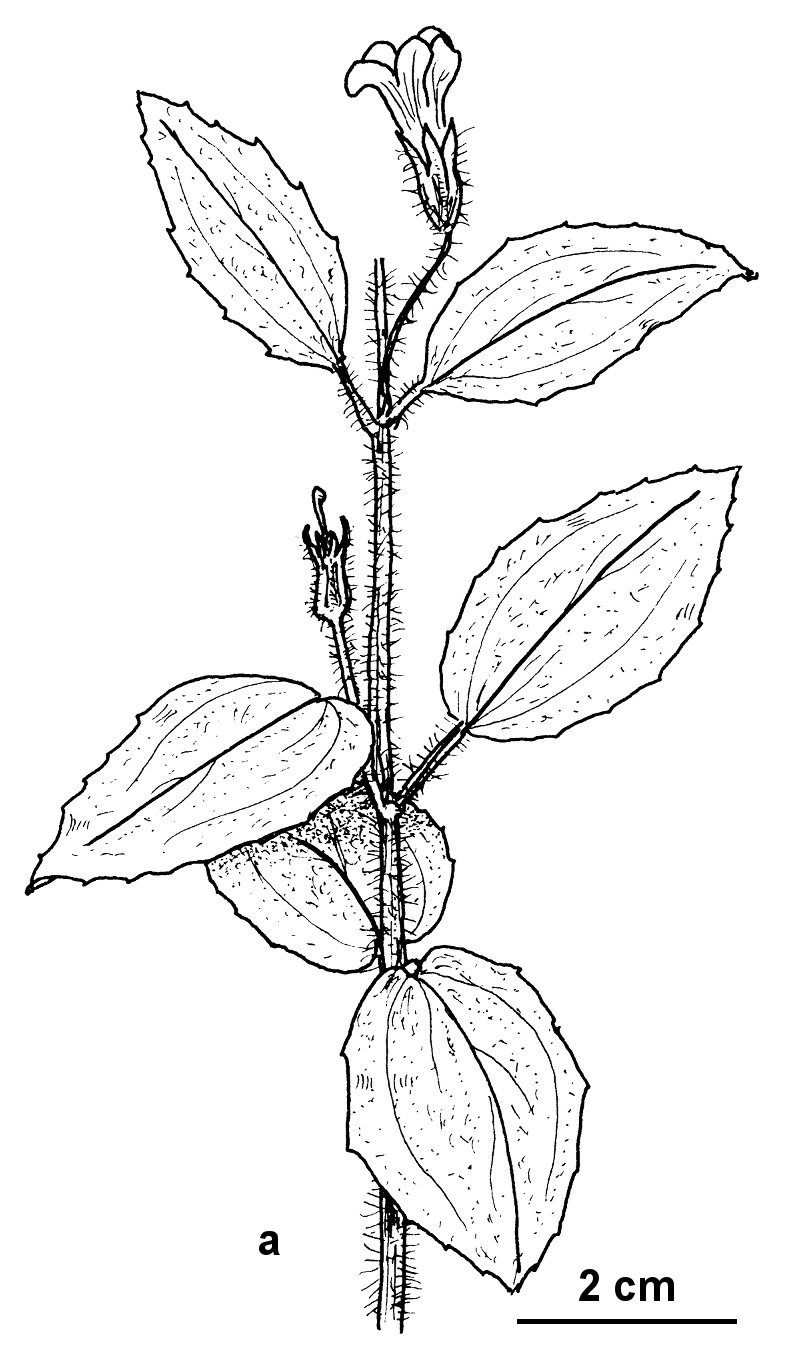Erythranthe moschata
(Douglas ex Lindl.) G.L.Nesom Musk Monkey-flowerProcumbent or ascending, clammy-villous perennial, branches to 50 cm long. Leaves not joined at nodes, lamina broad-ovate, 20–60 mm long, 10–30 mm wide, apex acute to obtuse and mucronate, base rounded to cordate, margins toothed, 3-veined from base; petiole 2–10 mm long. Flowers 1 or rarely 2 in axils; pedicels 1–2 cm long. Calyx 8–12 mm long, teeth somewhat unequal, 3–4 mm long; corolla yellow, tube 15–25 mm long with fine red lines, lobes rounded, more or less equal, spreading, with a patch of coarse hairs and brown blotches inside the lower side of open mouth. Capsule ovoid, 5–6 mm long. Flowers mostly Nov.–Feb.
VVP, GipP, OtP, WaP, Gold, CVU, NIS, EGL, EGU, HSF, HNF, OtR, Strz, MonT, HFE, VAlp. Also naturalised SA, NSW, ACT, Tas. Native to North America. Widespread in montane to subalpine areas in the east, scattered west of Melbourne (e.g. Creswick, Daylesford); growing in moist sites in pasture and gullies, in swamps and along streams.
Although commonly described as musk-scented, plants in Australia (and most other places) are more or less scentless. It appears that the scented form, once widely cultivated, may have been a ‘sport’ that has not bred true.
 Spinning
Spinning


